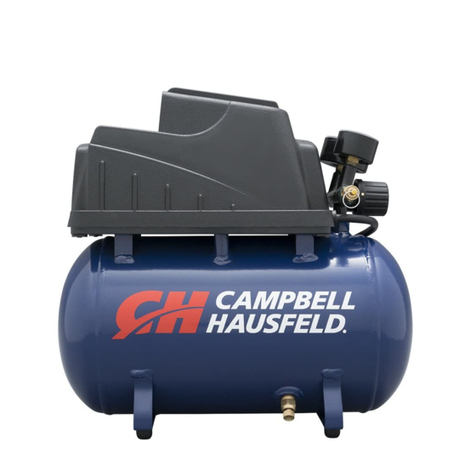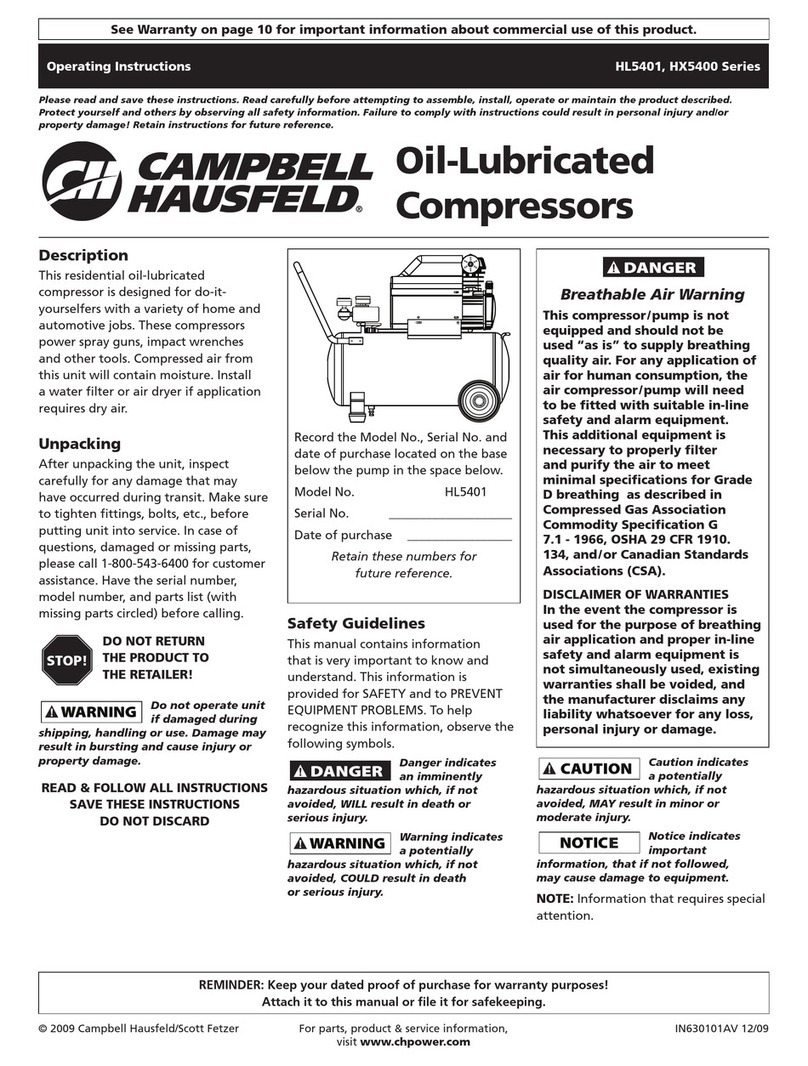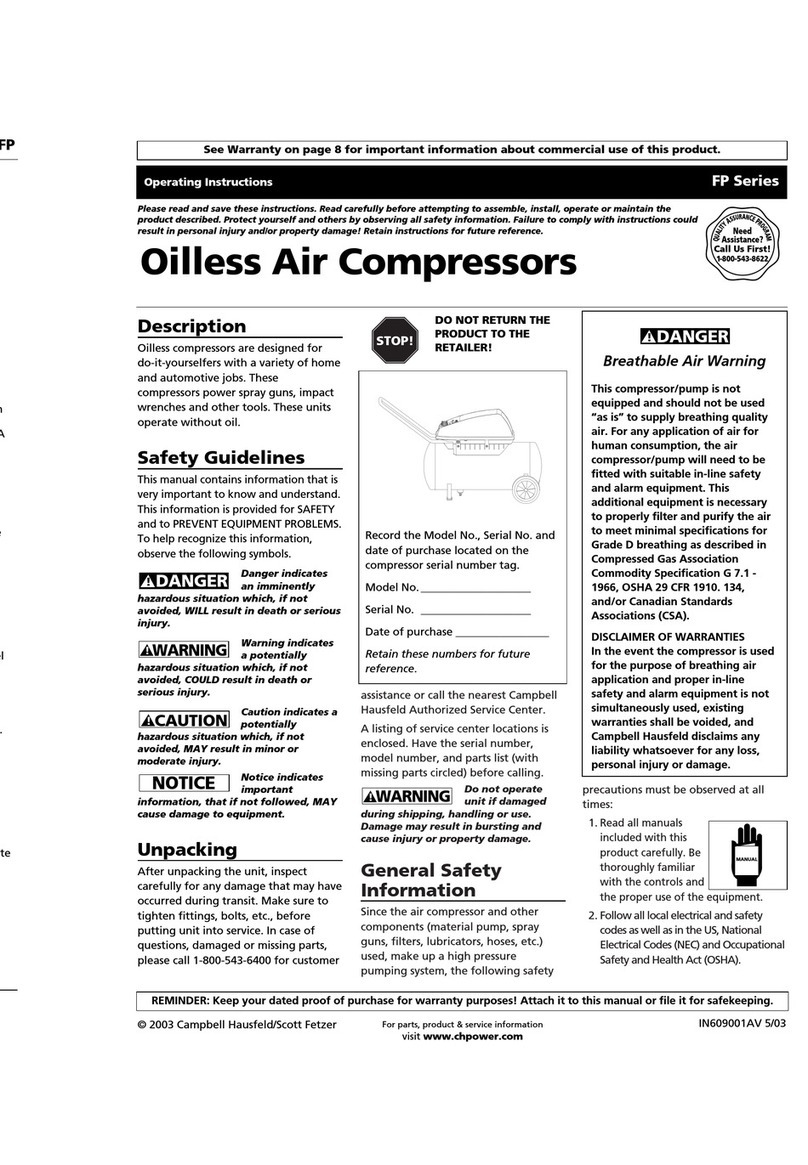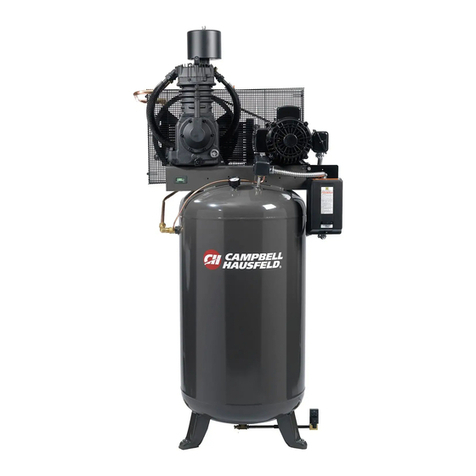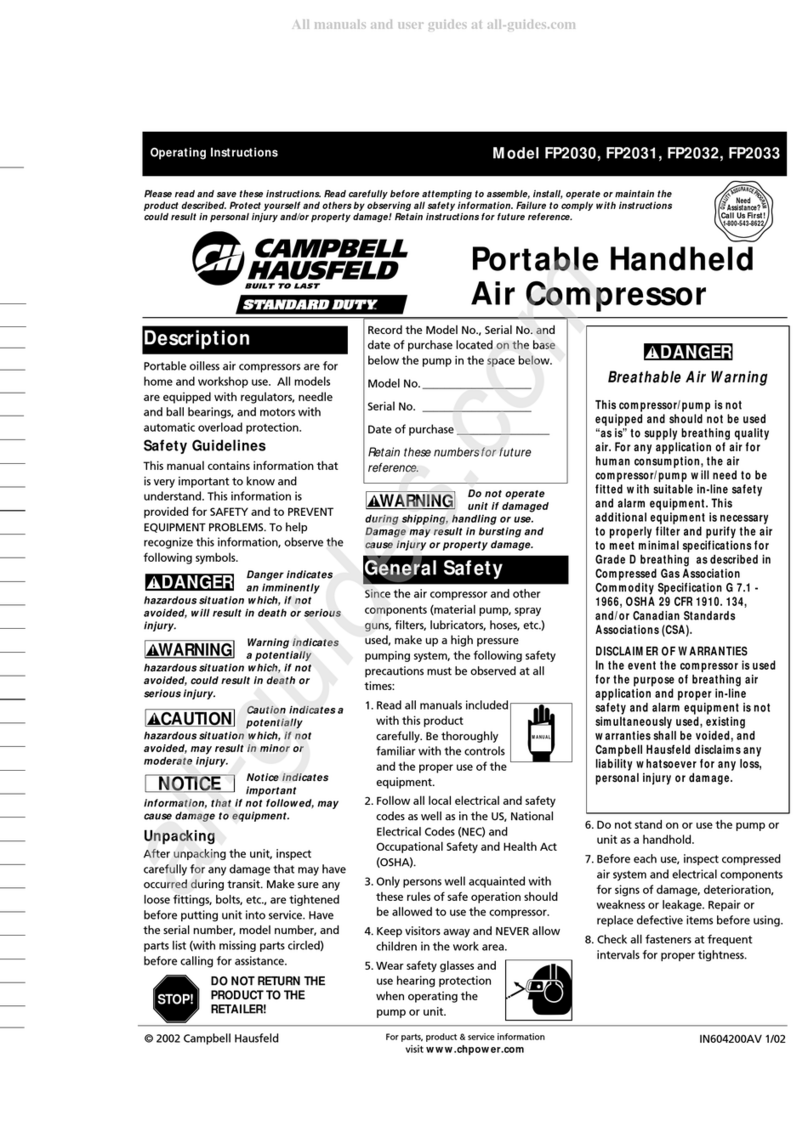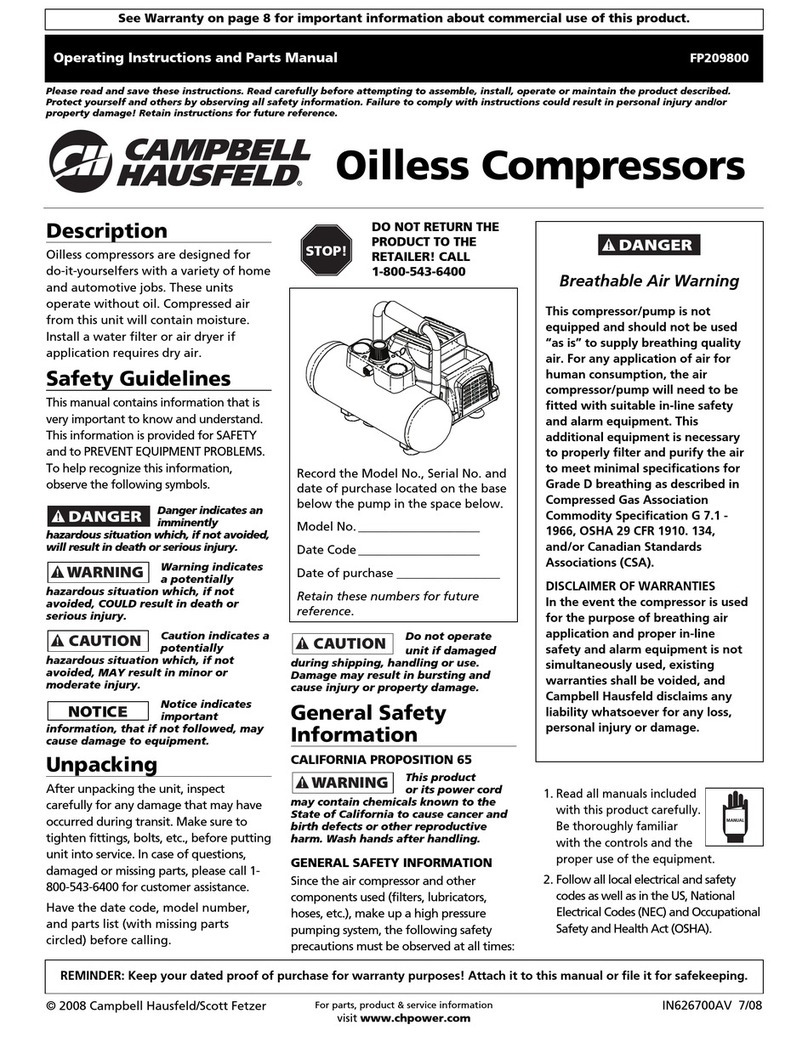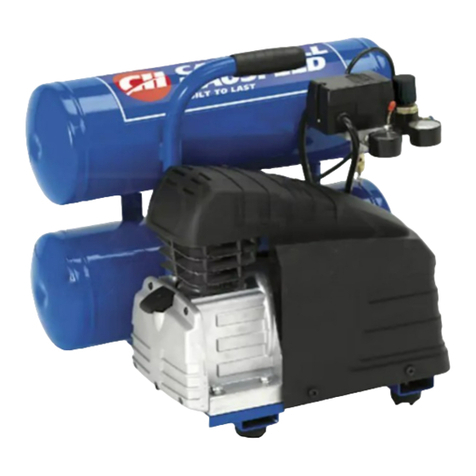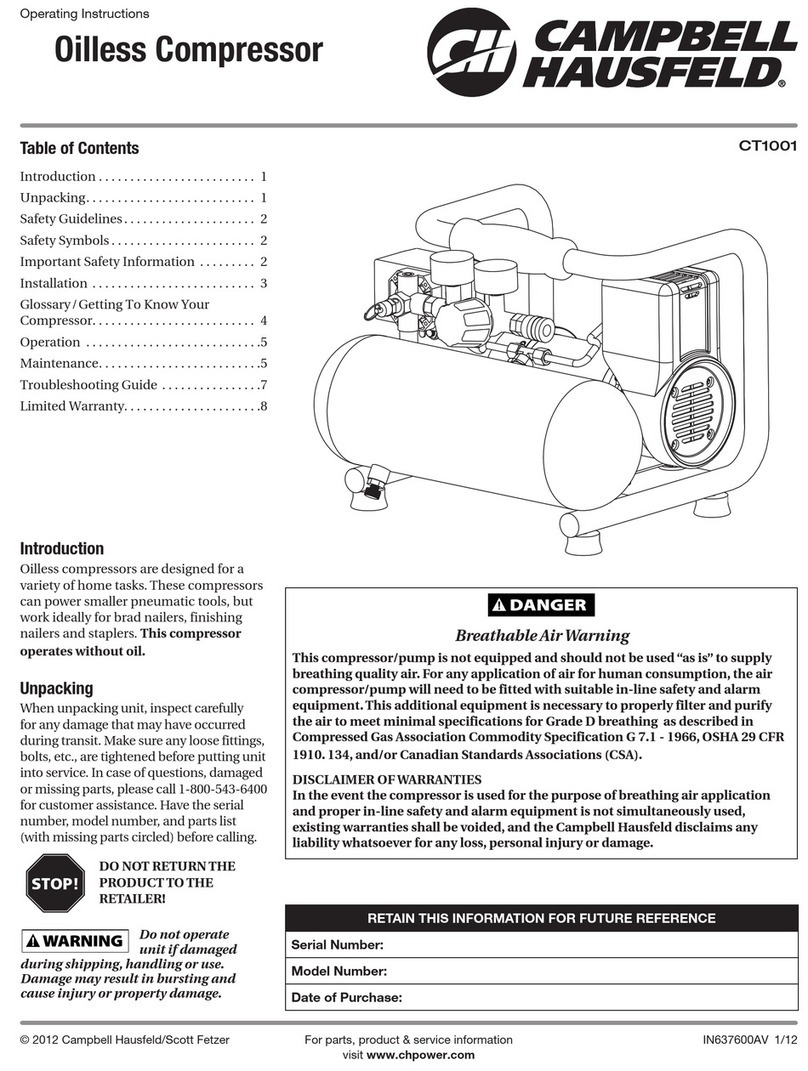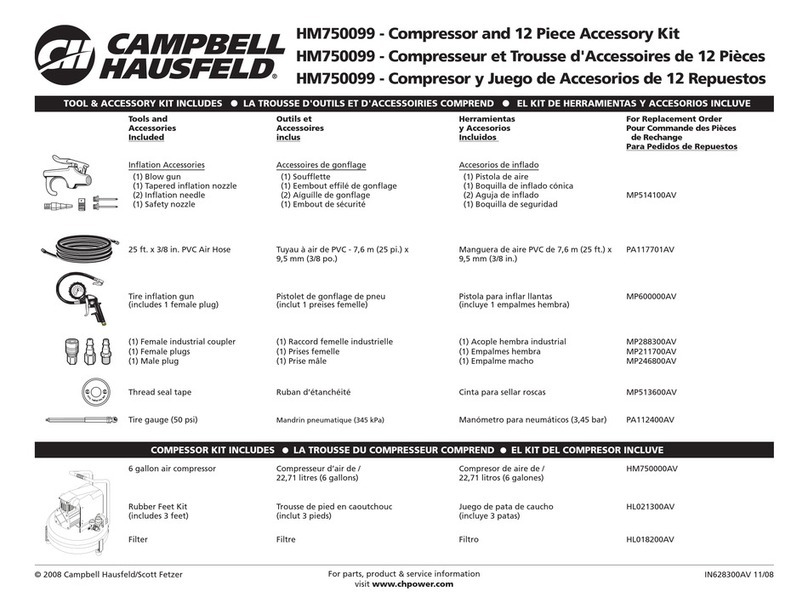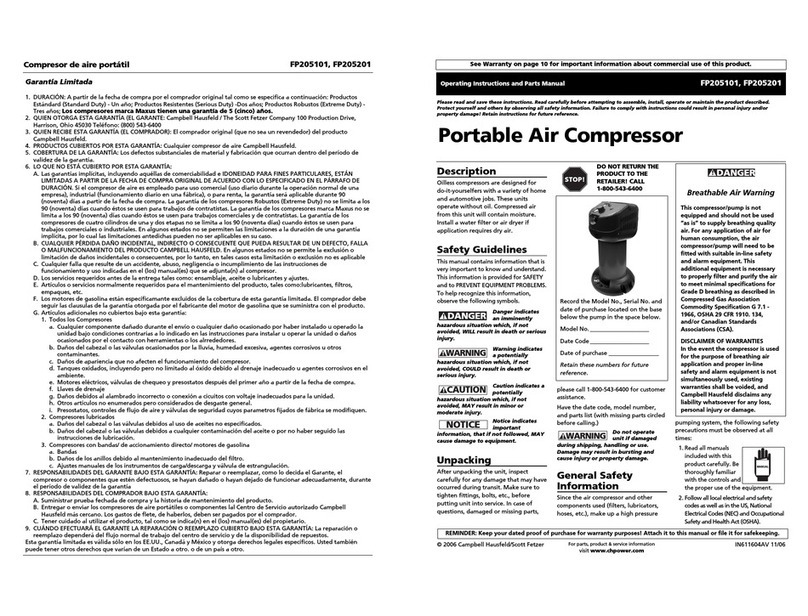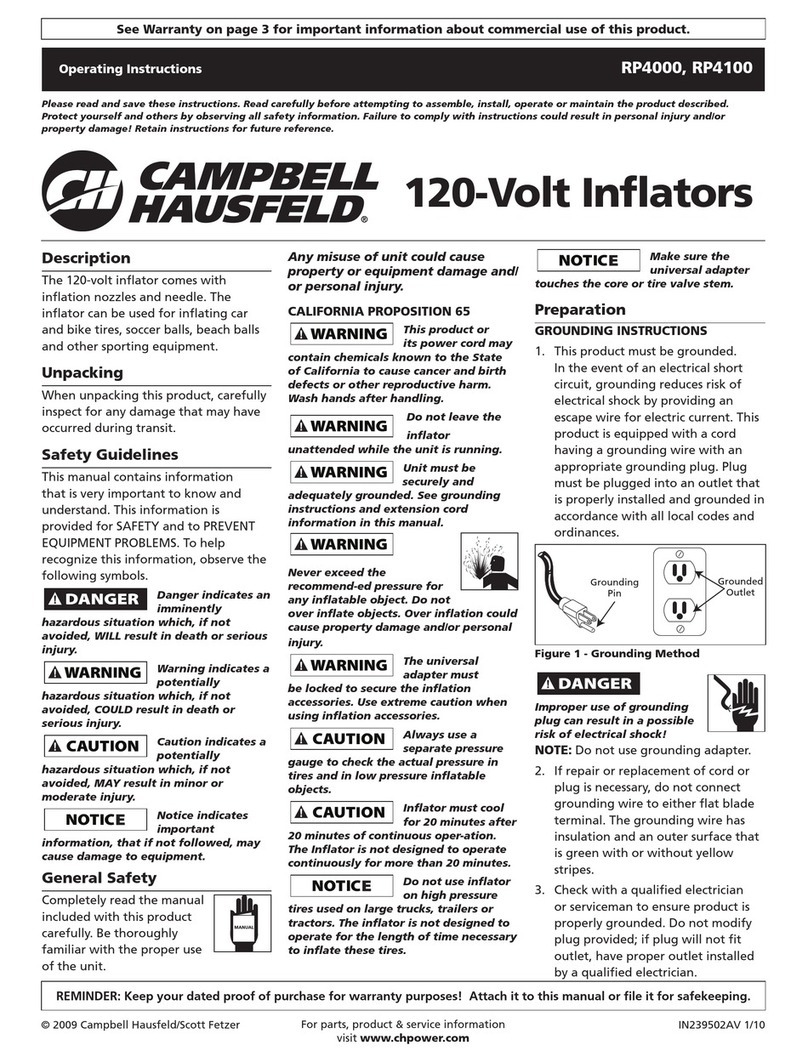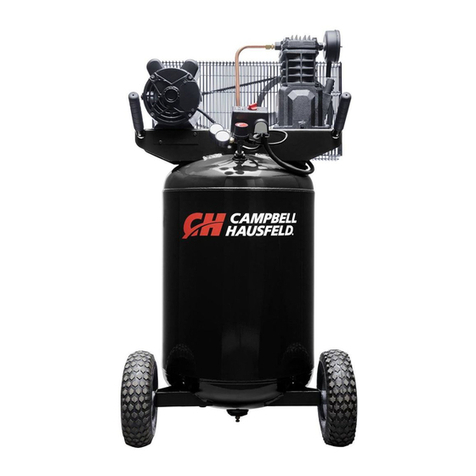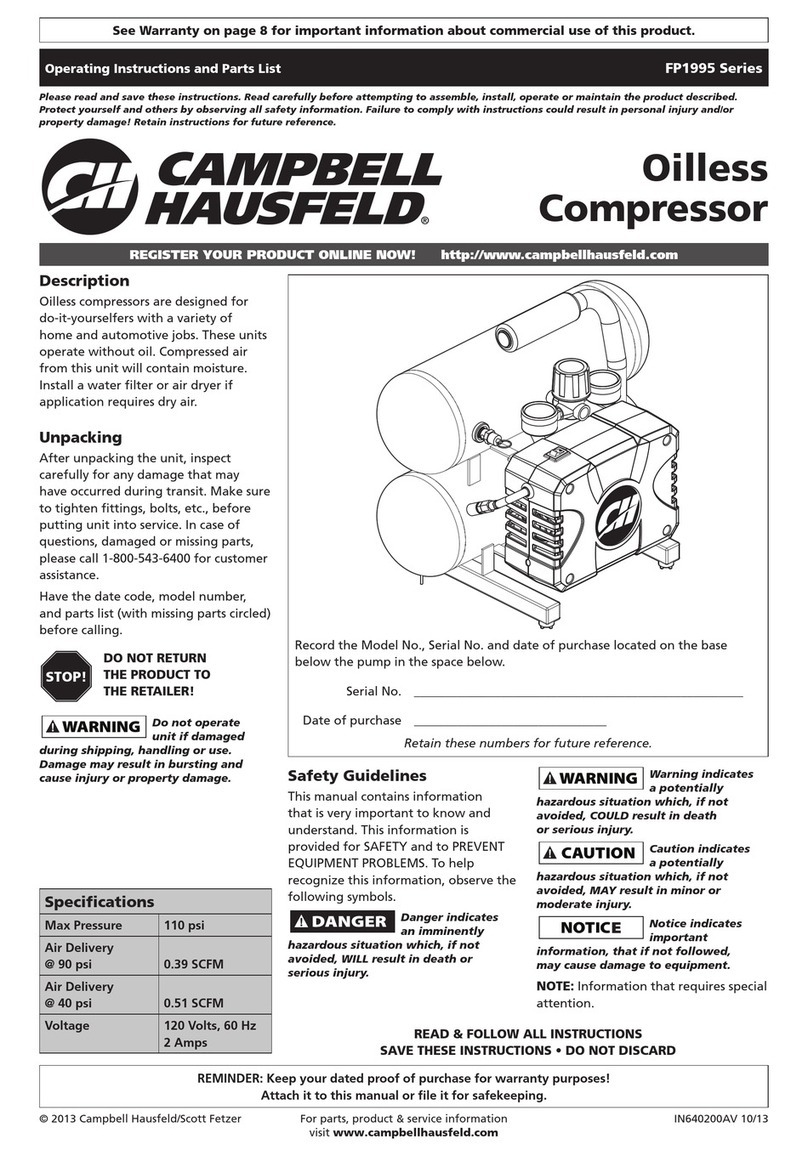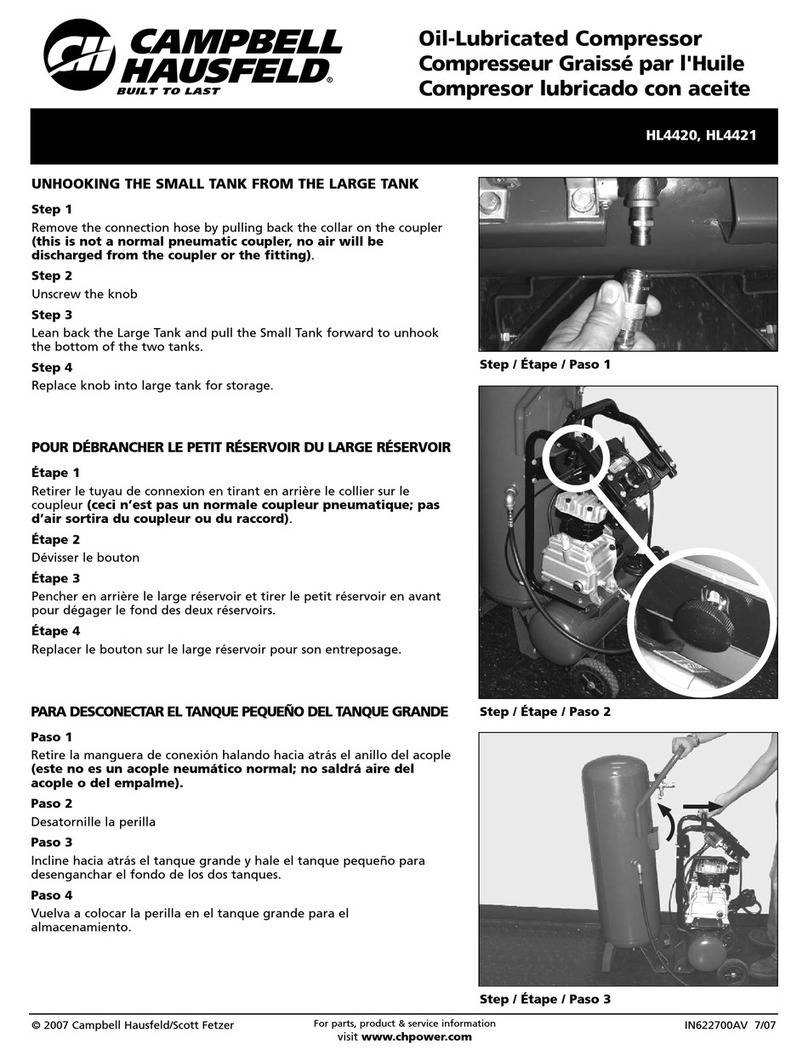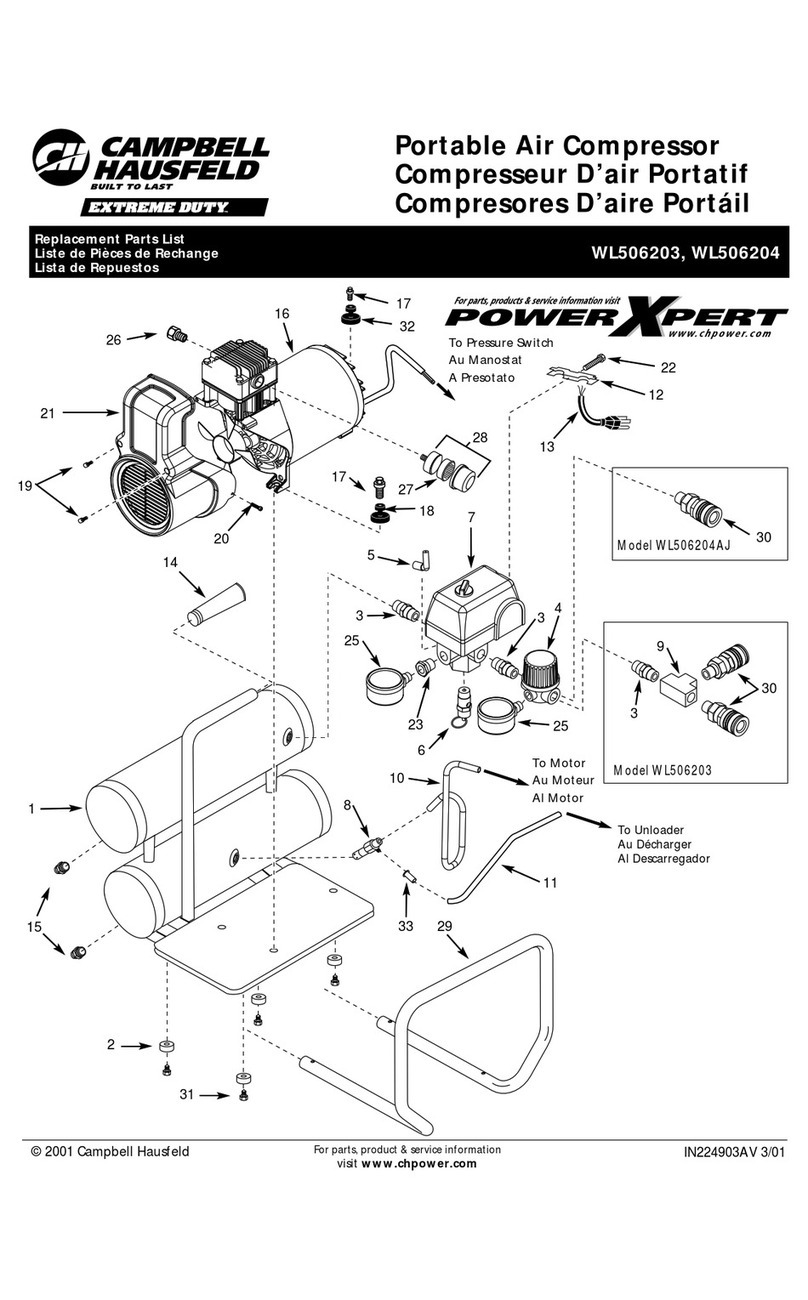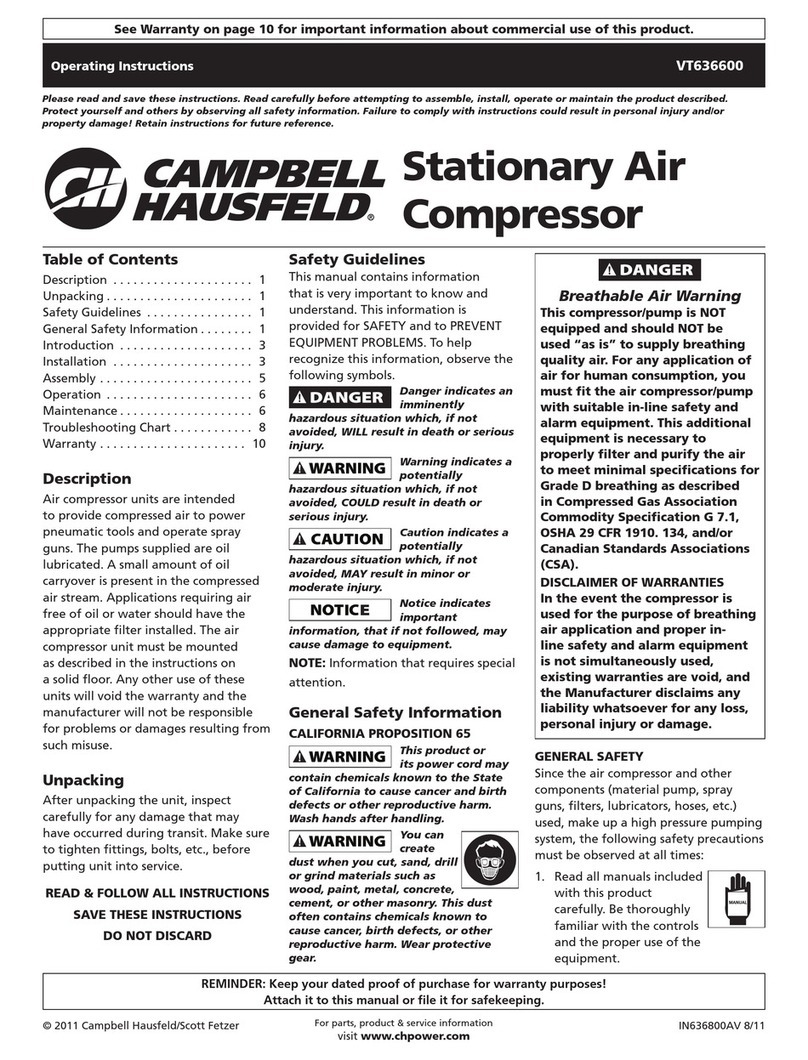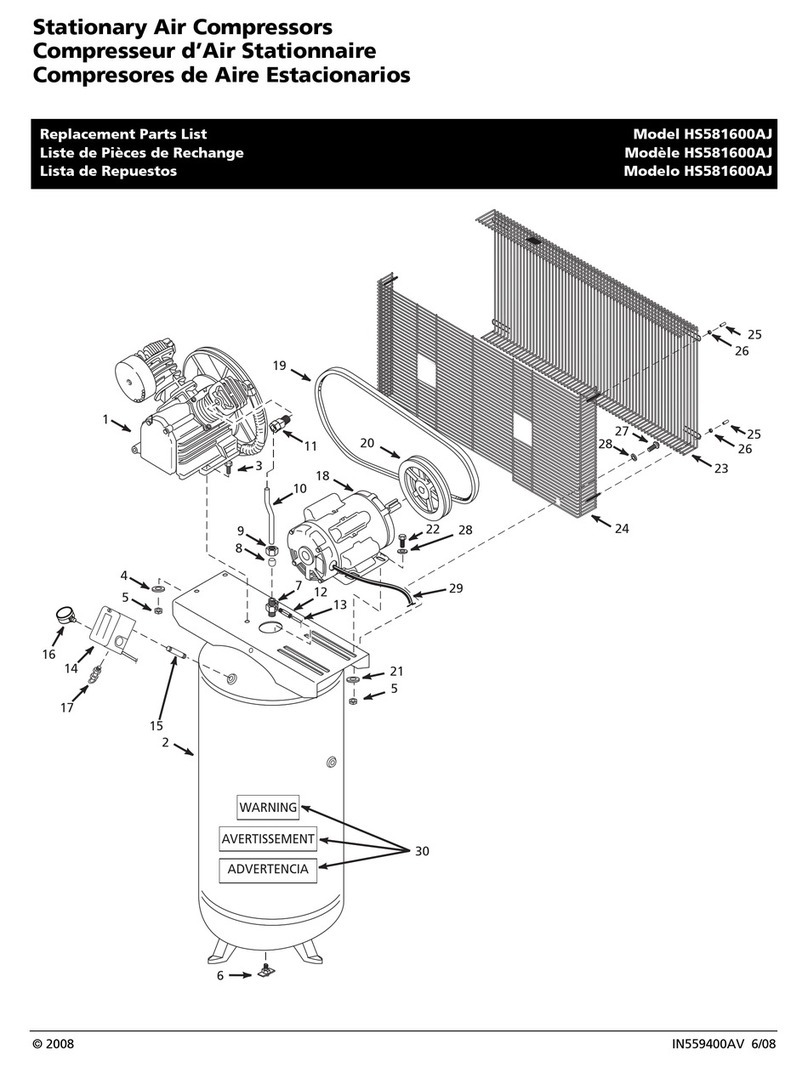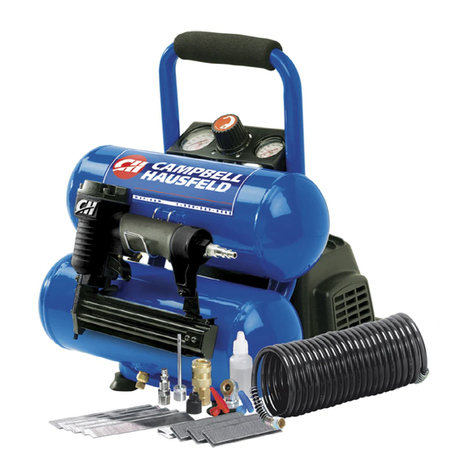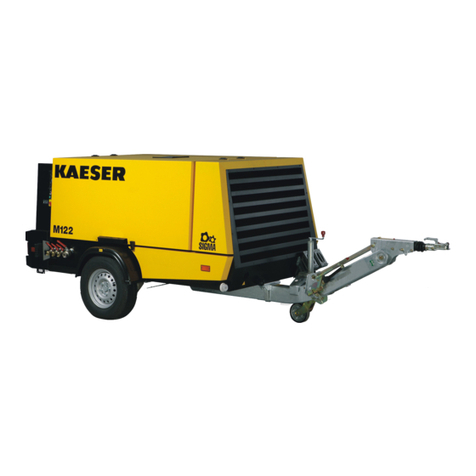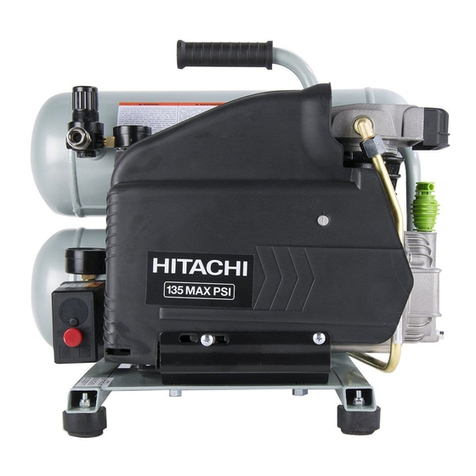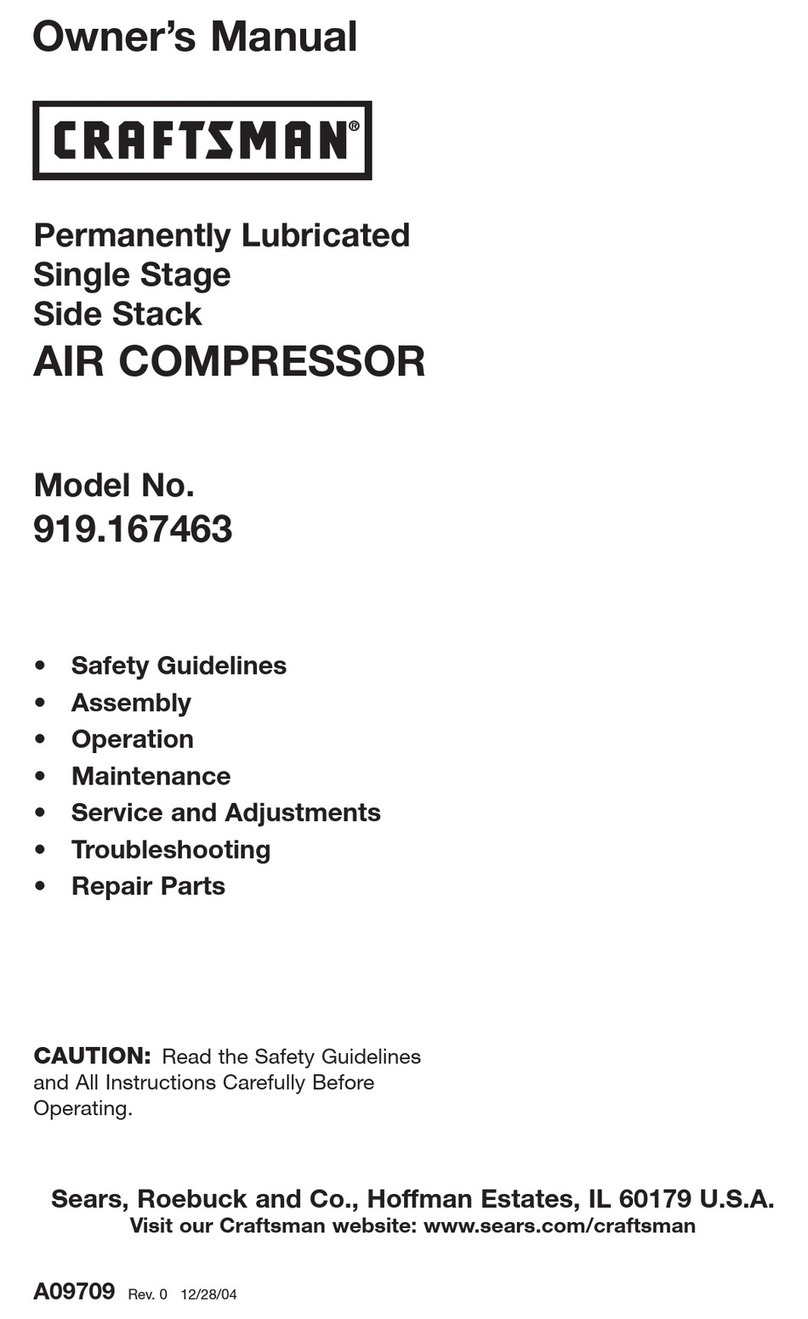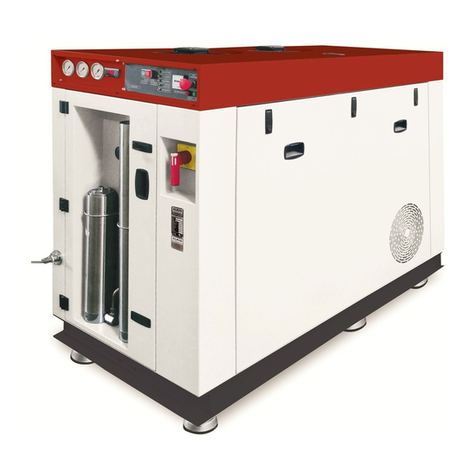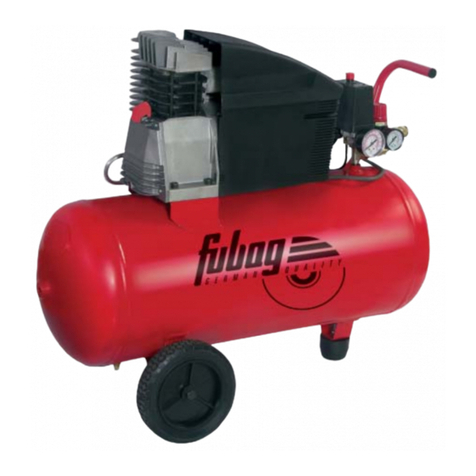Air Compressors
General Safety (Cont.)
I_WARNINGI
Motors, electrical equip-
ment and controls can
cause electrical arcs that
will ignite a flammable gas or vapor.
Never operate or repair in or near a
flammable gas or vapor. Never store
flammable liquids or gases in the vicini-
ty of the compressor.
Never operate compressor
withoutabeltg.a . This U /
unit canstart automatically _-_
without warning. Personal
injury or property damage could occur
from contact with movingparts.
9. Do not wear Iooseclothing or jewel-
ry that will get caught in the mov-
ing parts of the unit.
Compressor parts may be
hot even if the unit is
stopped.
10. Keep fingers away from a running
compressor; fast moving and hot
parts win cause injury and/or burns.
11. If the equipment should start to
vibrate abnormally, STOPthe
engine/motor and checkimmediate-
ly for the cause. Vibration is gener-
ally an indication of trouble.
12.To reduce fire hazard, keep
engine/motor exterior free of oil,
solvent, or excessive grease.
WARNINGI AnASMecode
ty relief valve with a
setting no higher than the Maximum
Allowable Working Pressure(MAWP)of
the tank MUSThe installedin the air lines
or in the tank for this compressor.The
ASMEsafety valve must have sufficient
flow and pressureratings to protect the
pressurized components from bursting.
The flow rating canhe found in the parts
manual. The safety valve in the intarcool-
er doesnot provide systempro_-tion.
Maximum operat-
ing pressure is 175
psi for two-stage compressorsand 135
-150 psi for single stage compressors.Do
not operate with pressureswitch or pilot
valves sethigher than 175 psi (two-stage)
or 135 -150 psi (singlestage).
13. Never attempt to adjust ASME safe-
ty valve. Keep safety valve free from
paint and other accumulations.
Never attempt to repair or
modify a tank! Welding, |_
drilling or any other mndi- L _ "mE_
fication will weaken the
tank resulting in damage from rupture
or explosion. Always replace worn,
cracked or damaged tanks.
Drain liquid from
INOTICE I tankdaily.
14. Tanks rust from moisture build-up,
which weakens the tank. Make sure
to drain tank regularly and inspect
periodically for unsafe conditions
suchasrust formation and corrosion.
15. Fast moving air will stir up dust and
debris which may be harmful. Release
air slowlywhen draining moisture or
depressurizing the compressor system.
SPRAYING PRECAUTIONS
IAWARNINGI
Do not spray flammable
materials in vldnity of open
flame or near i_'rtioe
sourcesincludingthe compressor unilL
16. Do not smoke when spraying paint,
insecticides, or other flammable
substances.
17. Use a face mask/respi- FA,,.ah- _
rator when spraying
and spray in a well ven-
tilated area to prevent
health and fire hazards.
18. Do not direct paint or other sprayed
material at the compressor. Locate
compressor asfar away from the spray-
ing area aspossibleto minimize over-
spray accumulation on the compressor.
19. When spraying or cleaning with sol-
vents or toxic chemicals, follow the
instructions provided by the chemi-
cal manufacturer.
Installation
IAWARNING]
Disconnect, tag and lock
out power source then
release all pressure from
the system before attempting to
install, service, relocate or perform any
maintenance.
A_--CAUTION] Donotliftormove
unit without appro-
priately rated equipment. Be sure the
unit issecurely attached to lifting
device used. DOnot lift unit by holding
onto tubes or coolers. Do not use unit
to lift other attached equipment.
Never use the
wood shipping
skids for mounting the compressor.
Install and operate unit at least 24"
from any obstructions in a dean, well
ventilated area. The surrounding air
temperature should not exceed 100=F.
This will ensure an unobstructed flow
of air to cool compressor and allow
adequate spacefor maintenance.
Do not locate the
]ACAUTIONI compressoralrlnlet
near steam, paint spray, sandblast areas
or any other source of contamination.
NOTE: If compressor operates in a hot,
moist environment, supply compressor
pump with clean, dry outside air.
Supply air should be piped in from
external sources.
TANK MOUNTING
The tank should be bolted into a flat,
even, concrete floor or on a separate
concrete foundation. Vibration isolators
should be used between thetank leg
and the floor. Model MP345800AJ isola-
tor pads are recommended for horizon-
tal units. Model MP345700AJ isolator
pads are recommended for vertical units.
When using isolator pads, do not draw
bolts tight. Allow the pads to absorb
vibrations. When isolators are used, a
flexible hose or coupling should be
installed between the tank and service
piping.
FAWARNING]
Failure to properly install
the tank can lead to cracks
at the welded jointa and
possible bursting.
PIPING
IAWARNINGI Never use plastic
(PVC) pipe for com-
pressed air. Serious injury or death
could result.
Any tube, pipe or hoseconnectedto the
unit must be able to withstand the tem-
perature generated and retain the pres-
sure. All pressurized components of the
air systemmust have a pressure rating
higher than or equal to the 200 psifor

